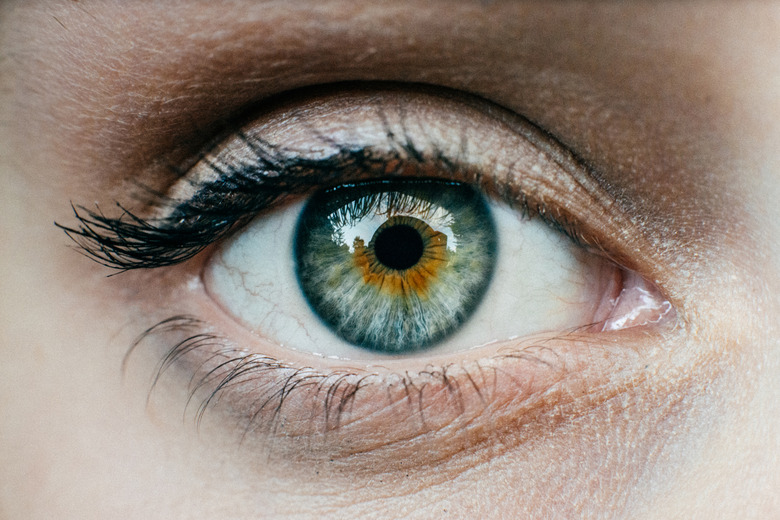Where Do The Physical Traits We Inherit Come From?
Most people seem to intuitively understand that their resemblance to their closest relatives – parents, children and siblings – is no accident of nature, and is under the control of things people all carry in their bodies and have the potential to pass along to future generations. You may have engaged in a little fun speculation along these lines, wondering what the physical result would be if two celebrities or even a couple of everyday people you know had a child together.
The basic molecular mechanisms underlying the process formally known as inheritance first came to light in the late 1800s, when the monk Gregor Mendel conducted an extended series of now-famous experiments on pea plants and determined how certain family tree traits are maintained in related individuals while others are less common.
Mendel's Fundamental Insights
Mendel's Fundamental Insights
When Mendel bred pea plants with certain characteristics with each other, he had the insight to do this using different plants that "bred pure" with each other for certain traits, such as pea color and pea texture. In this way, he ensured that the molecular make-up of each parent plant could be known for sure, even if he did not necessarily know what that consisted of at a micro level. If all plants within a group only produced smooth peas as offspring, whereas all plants in a different group only produced wrinkled seeds, Mendel was aware that something about the chemical make-up of these plants guaranteed this outcome.
Mendel's greatest breakthrough was probably his realization that some traits are inherited intact. That is, smooth peas bred with wrinkled peas led only to either clearly smooth or wrinkled peas, not some intermediate variety. He also noticed that this occurred in specific mathematical proportions that only made sense in the light of what he called dominant and recessive genes.
Genes, Alleles and Dominance
Genes, Alleles and Dominance
A gene is a length of DNA, a part of a chromosome, that codes for a specific protein. (You have 23 pairs of chromosomes, one pair of which are sex chromosomes.) Most genes can come in two varieties, called alleles. If you think of the menu of a fast-food restaurant as being a chromosome, and the individual menu items (hamburger, chicken sandwich, fries, shake) as "genes," then the alleles would be the specific choices from among these "genes": curly fries or cheese fries? Ketchup or no ketchup on your burger? Chocolate or vanilla shake?
The key in this analogy is that alleles, at least the ones of concern here, are inherited intact. You get one from your mother and one from your father. In addition, one of these is dominant over the other, so that the presence of a single dominant allele effectively negates the presence of a single recessive allele. Recessive alleles, however, can still be passed along to other generations, where they may then become expressed (visible) if the other parent also contributes a recessive allele.
Eye color, hair color and a propensity toward certain diseases are among the physical traits you inherit from your parents.
Family Tree Traits
Family Tree Traits
Face shape inheritance, and the form of different heritable facial features, offers much of the basis for why people can perceive "relatedness" in themselves and others. Think about it: Despite the planet having billions of people, many of whom look very much alike, the chances that you would be genuinely confused with another human being by anyone who knows you are very small (unless, of course, you happen to have an identical twin).
You may have discerned that some people have what is called a "widow's peak," or a hairline that is pointed in the center, while others have hairlines that are more or less straight from one side of their heads to the other. A "widow's peak" is a dominant trait. If both of your parents have straight hairlines, you cannot have a widow's peak yourself, because both your mother and your father must have two recessive alleles for the hairline gene in order to express the straight-hairline trait. So, if both parents have the recessive straight-hairline trait, neither of them carry the dominant widow's-peak allele and can't pass it along to you. If one or both of your parents has a widow's peak, predicting what will happen in you or your siblings is more difficult unless you have more information about the hairlines of your parents' other close relatives.
The same simple dominant-recessive principle applies to a great many physical features, from the ability to "roll" your tongue to eyelash length to the shape of your eyebrows.
Cite This Article
MLA
Beck, Kevin. "Where Do The Physical Traits We Inherit Come From?" sciencing.com, https://www.sciencing.com/physical-traits-we-inherit-come-4570127/. 23 August 2018.
APA
Beck, Kevin. (2018, August 23). Where Do The Physical Traits We Inherit Come From?. sciencing.com. Retrieved from https://www.sciencing.com/physical-traits-we-inherit-come-4570127/
Chicago
Beck, Kevin. Where Do The Physical Traits We Inherit Come From? last modified March 24, 2022. https://www.sciencing.com/physical-traits-we-inherit-come-4570127/
